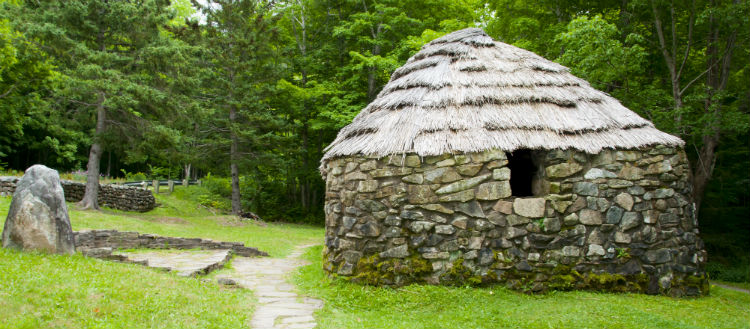Nova Scotia’s Scottish history is well documented. Its name literally means New Scotland in Latin and its flag is a mash-up of the saltire and the Royal Arms of Scotland.
It was back in 1620 when the first group of Scots arrived in the province. Though it wasn’t until the Highland Clearances in the 18th Century that Scottish immigrants flocked to Canada in large numbers. As time went on most Scottish Gaels settled in eastern Nova Scotia and throughout Cape Breton Island (while Irish Gaels settled in the urban areas like Halifax and Sydney).
Even to this day, these Scottish immigrants from five centuries ago have shaped Nova Scotia’s culture. In the 2006 Census it was found that 900 Nova Scotians are fluent in Gaelic languages! If you’re looking to explore Nova Scotia’s Scottish ancestry in more detail, we recommend the following seven landmarks, towns and historic sites.
Highland Village Museum/An Clachan Gàidhealach
Welcome to North America’s only living history museum for Gaelic language and culture. Within its 43-acre site you’ll find eleven historic buildings, including three frame houses (c1830-1900), a store, a carding mill, a church and a forge. Oh, and breath-taking views of Bras d’Or Lake.
Alexander Graham Bell National Historic Site
Discover the life and inventions of Scottish-born genius Alexander Graham Bell. Exhibits showcase how he and his team achieved Canada’s first powered flight with their aeroplane Silver Dart, produced the world’s fastest boat, developed advanced recording technology, designed giant kites and – of course – invented the telephone. You’ll also have the chance to nosey at personal artefacts that highlight his humanitarian work.
Glenora Inn & Distillery
Single malt whiskey is synonymous with Scottish culture, and Scottish migrants brought the famous drink with them. The Glenora Distillery even uses highlands Scot’s tradition of making it with only three ingredients: barley, yeast and water. It is also Canada’s first single malt whiskey distillery.
Tours of the distillery are available to visitors daily from 9am to 5pm. Plus there’s a gift shop where you can purchase lovely hand-crafted gifts by local artists as well as a selection of imported Scottish treasures.
The Cabot Trail
You’ll find this easy walking trail in the Cape Breton Highlands National Park. Specifically the Grande Anse Valley, which is one of the largest old-growth hardwood forests in the Maritimes. Because it is so protected, access is restricted to the 15 minute trail – where you’ll find a replica of a Scottish crofter’s hut at the start.
New Glasgow
The town of New Glasgow was founded by Scottish immigrants in the late 18th century and is now the urban hub of the Northumberland Shore. It’s the home of Nova Scotia Museum of Industry, which has hands-on exhibits, photographs, and videos that showcase the area’s industrial contributions – from things as small as printing type, to as large as a full-size locomotive (many of which Scots immigrant and descends were involved in).
Also remember to stop by the Carmichael Stewart House Heritage Museum on Temperance Street. It’s the former home of the Carmichael family who were prominent shipbuilders (and were of Scottish heritage).
Pictou County
While the name Pictou might not sound as Scottish as New Glasgow, this is actually where Nova Scotia’s Scottish heritage began. Here you’ll find The Hector Heritage Quay, where visitors can tour of a replica of the ship that transported the very first wave of Scottish immigrants to the shores of Nova Scotia (there were 170 of them and the journey took 11 weeks).
Titanic Memorial
Nova Scotia is the closest landmass to the final resting spot of the ill-fated Titanic and you’ll find a lot of artefacts in the province. Many of the crew and passengers were Scottish, including the First Officer William M Murdoch (born in Dalbeattie) and violinist John Law Hume (born in Dumfries). The Maritime Museum of the Atlantic in Halifax has what is generally recognised as the world’s finest collection of wooden artefacts from the vessel. Read our previous blog for a full list of sites in Nova Scotia connected to the Titanic.
What’s your favourite Scottish landmark in Nova Scotia?

